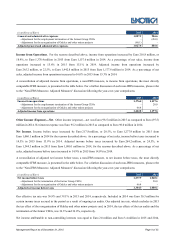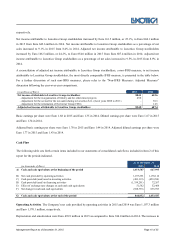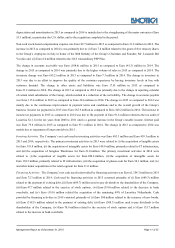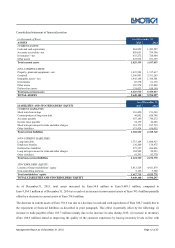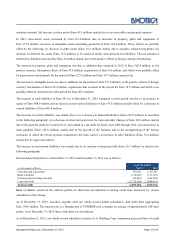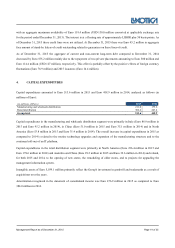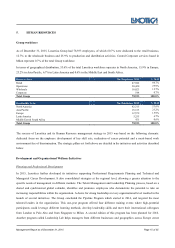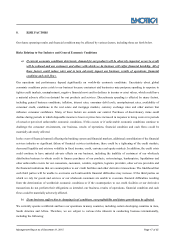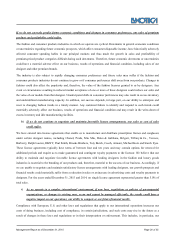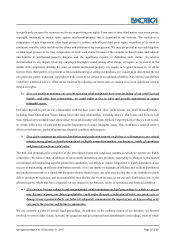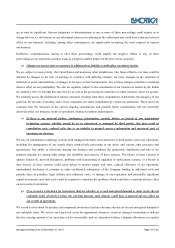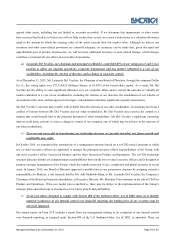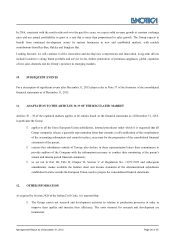LensCrafters 2015 Annual Report Download - page 23
Download and view the complete annual report
Please find page 23 of the 2015 LensCrafters annual report below. You can navigate through the pages in the report by either clicking on the pages listed below, or by using the keyword search tool below to find specific information within the annual report.
Management Report as of December 31, 2015 Page 19 of 35
The mid- and premium-price categories of the prescription frame and sunglasses markets in which we compete are
particularly vulnerable to changes in fashion trends and consumer preferences. Our historical success is attributable, in part,
to our introduction of innovative products which are perceived to represent an improvement over products otherwise
available in the market and our ability to develop and defend our brands, especially our Ray-Ban and Oakley proprietary
brands. Our future success will depend on our continued ability to develop and introduce such innovative products and
continued success in building our brands. If we are unable to continue to do so, our future sales could decline, inventory
levels could rise, leading to additional costs for storage and potential write-downs relating to the value of excess inventory,
and there could be a negative impact on production costs since fixed costs would represent a larger portion of total
production costs due to the decline in quantities produced, which could materially adversely affect our results of operations.
f) If we are not successful in completing and integrating strategic acquisitions to expand or complement our
business, our future profitability and growth could be at risk.
As part of our growth strategy, we have made, and may continue to make, strategic business acquisitions to expand or
complement our business. Our acquisition activities, however, can be disrupted by overtures from competitors for the
targeted candidates, governmental regulation and rapid developments in our industry. We may face additional risks and
uncertainties following an acquisition, including (i) difficulty in integrating the newly acquired business and operations in
an efficient and effective manner, (ii) inability to achieve strategic objectives, cost savings and other benefits from the
acquisition, (iii) the lack of success by the acquired business in its markets, (iv) the loss of key employees of the acquired
business, (v) a decrease in the focus of senior management on our operations, (vi) difficulty integrating human resources
systems, operating systems, inventory management systems and assortment planning systems of the acquired business with
our systems, (vii) the cultural differences between our organization and that of the acquired business and (viii) liabilities that
were not known at the time of acquisition or the need to address tax or accounting issues.
If we fail to timely recognize or address these matters or to devote adequate resources to them, we may fail to achieve our
growth strategy or otherwise realize the intended benefits of any acquisition. Even if we are able to integrate our business
operations successfully, the integration may not result in the realization of the full benefits of synergies, cost savings,
innovation and operational efficiencies that may be possible from the integration or in the achievement of such benefits
within the forecasted period of time.
g) If we are unable to achieve our business objectives and manage growth, operating margins may be reduced as a
result of decreased efficiency of distribution.
In order to achieve our business objectives and manage our growth effectively, we are required to increase and streamline
production and implement manufacturing efficiencies where possible, while maintaining strict quality control and the ability
to deliver products to our customers in a timely and efficient manner. We must also continuously develop new product
designs and features, expand our information systems and operations, and train and manage an increasing number of
management level and other employees. If we are unable to manage these matters effectively, our distribution process could
be adversely affected and we could lose market share in affected regions, which could materially adversely affect our
business prospects.


